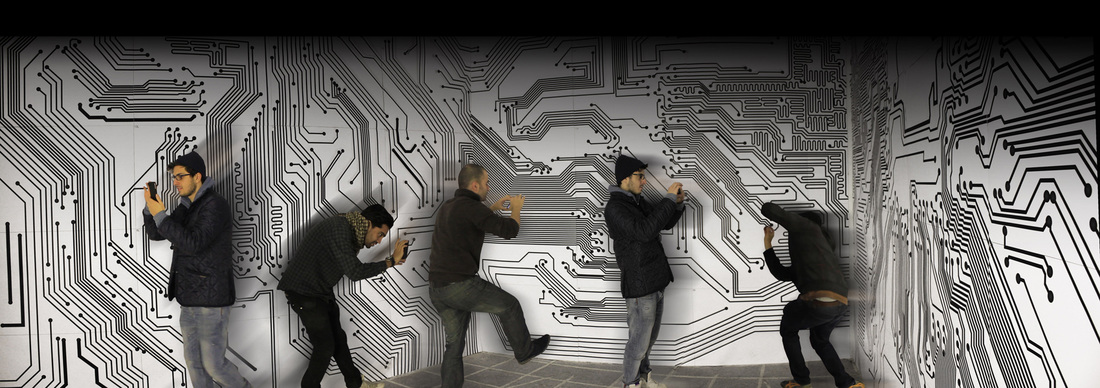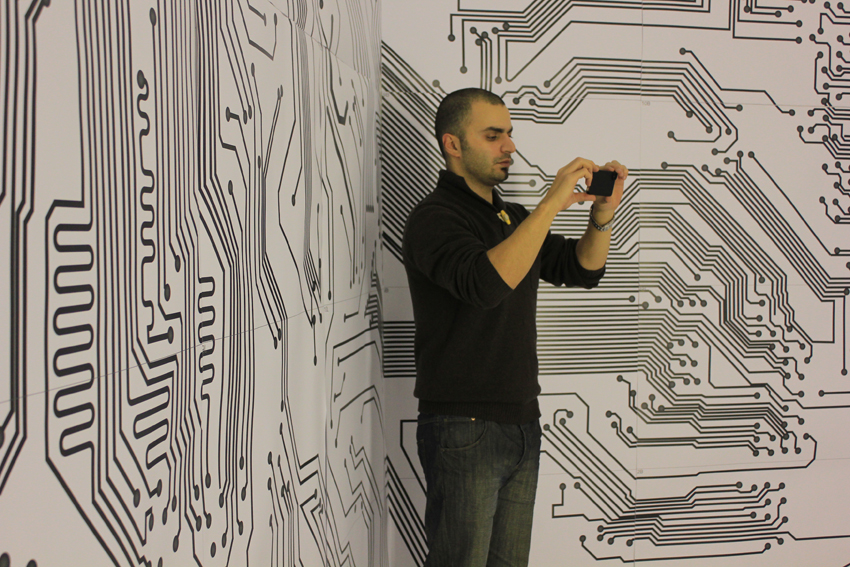|
Grid is an Augmented Reality environment which provides a spatial configuration for real-time gaming at an architectural scale. This project showcases a prototype of the AR environment devised at one to one scale to test the possibilities of augmented reality in the built environment. The project uses a simple architectural maze which people can navigate through in real-time. The prototype was developed for the iphone using Qualcomm Augmented Reality SDK and Xcode This project aims to explore new ways of inhabiting and interacting in social spaces. To enhance social activities in architectural spaces we can augment the space with interactions which merge reality with digital practices which occur on social networking platforms. More people partaking in the augmented space results in a much more dynamic environment and heightened social engagement. To propose a new way of experiencing and circulating through the city, an architectural playground that allows for increased social engagement with the building and the objects within. These include gaming hot spots which utilize mixed reality to transform the city with interactive playgrounds The use of augmented reality technology in architecture was evaluated in light of creating new meaningful spaces of interaction and discourse which can be non-regulated, open source and allow for freedom of expression. The future of AR provides us with several possibilities on how virtual architecture can impact on urban space. This technology presents a new methodology for implementing some of the key ideas on temporality, and adaptation, social participation and improvisation in the quest for achieving democratic alternatives to occupation and inhabitation in public space. The synthesis of AR and physical space has a profound impact on shaping human interaction in the same manner as the internet and mobile phones have in recent times. Moreover the overlay of data onto our visual experience fosters new levels of engagement which can radically transcend the limitations of stationary screen based information. The quest for hybrid spaces of the future should mediate the superimposition of digital and physical in a way which can enrich the experience and inhabitation of the occupants in a site specific manner. This technological liberation should provide citizens with new forms of expression and an extension to the physical, social and cultural characteristics of a location. For more information on Grid, please visit the Grid Project Page.
0 Comments
Your comment will be posted after it is approved.
Leave a Reply. |
Darf BlogWelcome to Darf Blog. Categories
All
Archives
March 2024
|
Want more Information?
Our TeamAbout
|
HelpTutorials
|
LegalTerms of Use
|
All works © Darf Design 2020
Please do not reproduce without the expressed written consent of Darf Design
Please do not reproduce without the expressed written consent of Darf Design



 RSS Feed
RSS Feed
